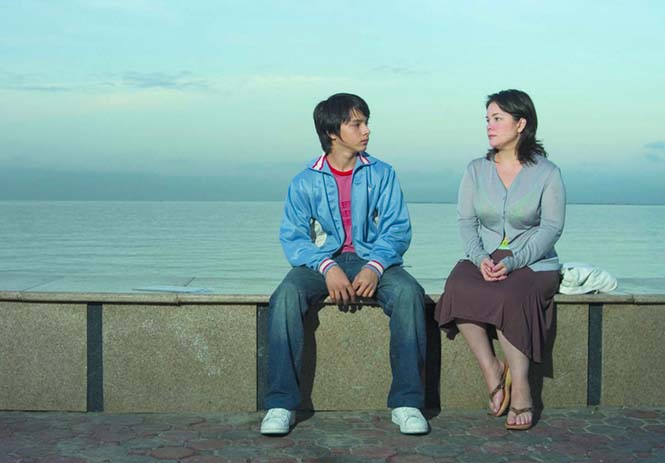In 2002, then Pres. Gloria Macapagal-Arroyo – while delivering a speech during a culture and the arts conference – said:
“Many years ago when the cultural center was built, I told myself if I were president I wouldn’t spend all that money on the Cultural Center of the Philippines. It’s an imposing building not accessible to the masses and its very architecture, its very approach, physical approach is not accessible to the masses. It is forbidding. It is far away. It is not folksy. I said if I had that money I would rather have spent that money on cultural centers all around the country so that we can bring culture to the masses.”
In a way she was right, perhaps exemplified by her cited example, kabuki play in Japan, which she said remains culturally relevant because it is brought to the masses, to the people. By simply having a building – in Arroyo’s case, the Cultural Center of the Philippines – cultural growth may not be attained.
But in a way, too, she’s wrong. Cultural centers – whether it’s CCP (the complex in Manila/Pasay) or some community center in some far-flung area – are important exactly because they’re that: “centers”. More than providing spaces for performances, these are (as the cliché goes) “safe spaces” for (in this case) the culture and the arts. Not having such can be likened to the lack of LGBT centers in the Philippines, so that we don’t even have a safe space we can call our own; and the concept of having a “space” can never be under-estimated…
It is this thought that came to mind when I watched Ballet Philippines’ productions of Ibarra and Simoun – takes on Jose Rizal’s Noli Me Tangere and El Filibusterismo. Both feature original music by Jed Balsamo, choreography by Paul Alexander Morales, and the live performance of the ABS-CBN Philharmonic Orchestra – a quintet for Ibarra and the full orchestra under Gerard Salonga for Simoun.
Both Ibarra and Simoun showed – for me – how:
- “Big” establishments (like the maligned CCP) CAN play a role in cultural promotion (among others, they have the venue, budget, staff, et cetera); and
- Cultural and/or artistic presentations that may seem elitist can be “amended” so they become “palatable” to the masses.
Not that they are perfect; but both does succeed in providing glimpses (at times even in more “populist” moves) into the Philippine history through (the supposedly elitist art form of) ballet…
Ibarra
Premiered in 2010, Ibarra was based on Noli Me Tangere, which highlights the life of Crisostomo Ibarra, a man striving to make a change in the Spanish-controlled Philippine society that is defined by oppression (from the colonizers, as well as from fellow Filipinos, particularly of the ruling class). Using ballet, it takes an introspective look at the life of Rizal’s hero, who sacrificed his personal happiness for love of country.
Featuring Victor Maguad, Monica Amanda Gana, Jessa Tangalin, Eugene Obille, Ramon Victoria, and Ballet Philippines II, this production of Ibarra is more than commendable for (re)introducing to the viewers through dance the likes of Maria Clara (to date, how society still expects women to behave like); Padre Damaso (he who abused power using much-loved institutions – i.e. Roman Catholic Church); Doña Victorina (social climber extraordinaire); and Sisa (well, we all know her…).
There are points worth highlighting in this particular production…
- There’s the “modernizing” of the telling, so I was reminded of Baz Luhrmann’s Romeo + Juliet and Moulin Rouge (among others) – supporting the argument, if I may, on making a historical piece not only relevant but also accessible to today’s audience. This can be seen starting at the opening sequence – complete with the billing projected (as if on a wide screen) on a red curtain, while the quintet is at the corner of the stage.
The “telling” doesn’t always work, though – for instance, Ibarra is “broken” into scenes, with details on the scenes projected on the stage (e.g. Scene 1: Alon). Unfortunately, the writings on the wall aren’t always visible, so…
- Balsamo’s music was admirable. But, truth be told, the piece that syaed with me was Ave Maria (included in one of the scenes; LSS much!), so…
- The costumes didn’t work all the time, too – e.g. wearing a sando and tying a piece of fabric in the hair does not a Sisa make. Don’t get me started on the dullness due to the lack of color… Monotone color palette can be sexy, but Chicago (costume-wise) this isn’t…
- The choreography had great moments – for me, the duos (e.g. Interlude: Sisa and Scene 4: Awit) left the most impression. But (maybe it’s my age showing) expect to see the jerky movements of Alden Lugnasin (if you’re into that or not, is your call)…
And then, of course, there are the… should I say pang-masa (?) moves, as seen in snippets in (among others) Scene 6: Palabas. Getting the audience to laugh out loud, these are interesting injections in a classical form of dance; but whether they work or not, is entirely up to you…
In the end, of course, it’s still about the story – if we got Rizal’s story as told through ballet. I’d say yes (shaky due to the observations, or not). And this is why Ballet Philippines’ Ibarra a piece that’s worth to be seen, indeed…
Simoun
Rizal’s main character did a The Count of Monte Cristo comeback in El Filibusterismo, where the erroneously accused Ibarra returned as Simoun to get revenge. In between, we see the continuing oppression experienced by Filipinos, the “extent” we go to when oppressed (e.g. suicide of Maria Clara – a spoiler, yes, that the lady many want our women to emulate ended in tragedy), the continuing social climbing, and the (saddest of all) lesson for us to be pacifists (more on this later)…
Top-billed by Jean Marc Cordero, Denise Parungao, Rita Angela Winder, Erl Sorilla, Garry Corpuz, and Jemima Reyes, Simoun was a world premier.
Similar to Ibarra, there are also points worth highlighting here…
- The “modernized” approach remains the same. And I’d say here, it works better – e.g. the displaying of the scenes NOT at the center, but at one side, makes the wordings more readable.
- Balsamo’s music here is more memorable – e.g. I heard people humming the melody after the show, so…
- I still have issues with the costume; some of the clothes looked stiff, and at times, there were dancers who’d (constantly) pull their skirts down while dancing, so…
- The choreography had great moments, too – e.g. Interlude: Simoun, and even the crowd-pleasers Scene 7: Teatro and Scene 10: Kasal. The solos in Ibarra were more touching for me, though…
But also similar to Ibarra, the “test” here is if Rizal’s story was understood.
On the one hand, a friend who’s not very familiar with Rizal’s work said, “One has to read before watching this to truly appreciate this.” He did say that there were scenes that touched/affected him greatly…
On the other hand, and at the same time, Scene 11: Akda stays in mind for two reasons: one, the Romeo & Juliet-like scene (e.g. suicide in the face of adversity); and two, Rizal’s pacifist approach to attaining freedom (said to be a source of discord between him and the likes of Andres Bonifacio). To up the ante (re this “argument” to attaining freedom), Simoun even died in the company of a priest who reminded him that “for those who truly wish to change society, one needs but patience, selflessness, love and sacrifice.” The dance between the two was dramatic; but it can’t hide that lesson of pacifism particularly that, at times, blood may have to be shed for freedom (think of Kidapawan massacre, Mendiola massacre, SAF44, et cetera).
Now back to GMA’s argument…
Why settle for not having a center and just brining culture and the arts to the people, when both can be done at the same time. Because surely, to effectively promote culture and the arts, everything that can be used should be used. Think ballet. Think Ballet Philippines; in particular Ibarra and Simoun, and you’d get an inkling of this…
























































































